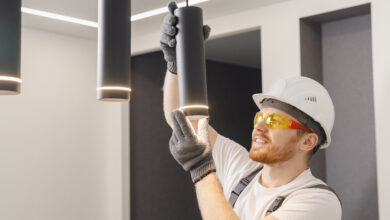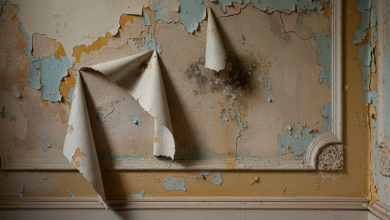From washing clothes, showering and using the toilet, to cooking and cleaning, a good water supply is essential to the normal running of our day-to-day lives. Any plumbing problems or interruption to your water supply can cause a major disruption, so you’ll want to get things back up and running as quickly as possible.
Check out our guide to six common plumbing problems – including their causes, advice on how to deal with them (DIY or getting a professional in) and tips on preventing the issue from returning.
1. Blocked drains or sinks
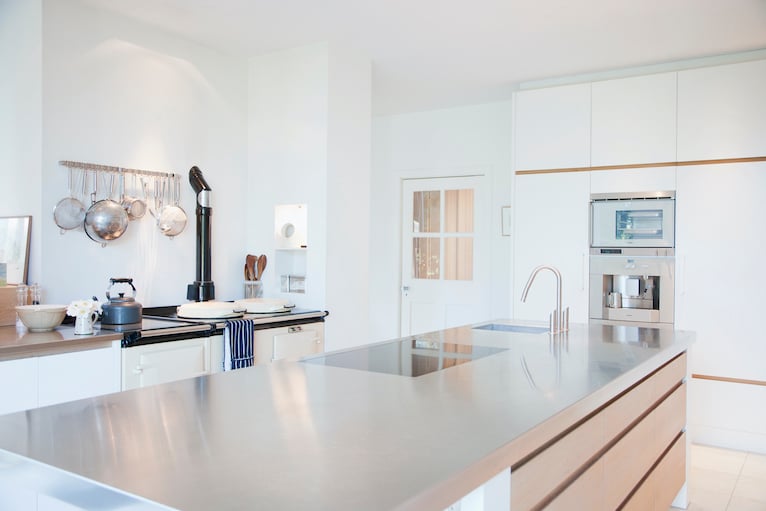
Whether it’s dirty washing up water that won’t drain or you keep finding yourself up to your shins in water every time you shower, sink or drain blockages can be inconvenient and unpleasant to deal with.
What causes a blocked sink?
Sinks and drains usually get blocked when something has gone down the plughole that shouldn’t have. Some of the most common causes of blockages in the kitchen are food and grease, whilst the main culprit in the bathroom is a build-up of hair and soap.
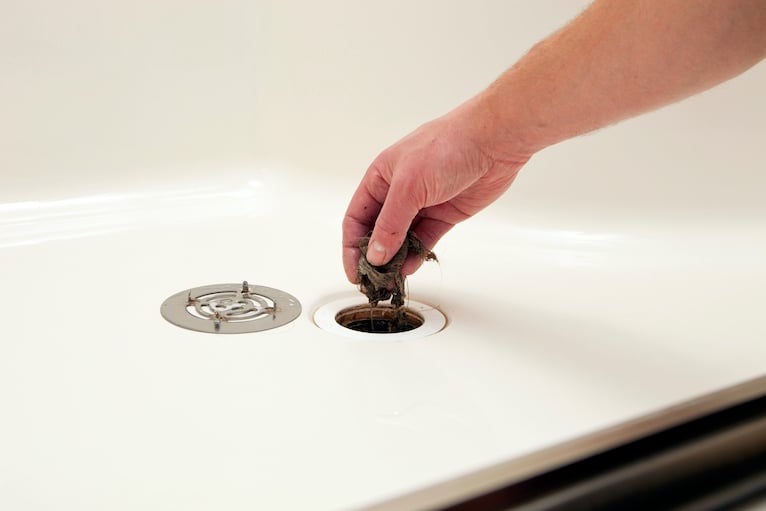
How to clear or open a blocked sink – DIY fixes
If you have the time and patience, then there are several different DIY methods that you can try before calling out a plumber.
1. Use a plunger
Turn on the taps and fill up the sink or basin until the plughole is covered. Then position your plunger over the plughole, ensuring that there is a good seal, and gently plunge up and down.
2. Try a homemade or shop bought sink unblocker
You can make a DIY sink unblocker using things you’ve likely already got in your cupboard:
- Method 1: Run hot water down the drain to soften the blockage. Then, pour some washing up liquid down there, and follow up by flushing it through with hot water.
- Method 2: Pour a mug of soda crystals down your sink, then run hot water down the drain.
If the homemade methods don’t work, then try using a shop bought sink unblocker.
3. Remove the U-bend
If your blockage is particularly stubborn and neither of the methods above have worked, then you may need to remove the U-bend to locate the blockage and manually remove it. The U-bend is the first bend in the pipe underneath the sink.
- Put a bucket underneath the U-bend to catch anything that comes out.
- Unscrew the two plastic fittings where the U-bend joins the bottom of your sink.
- Stop unscrewing the fittings once water starts coming out. Let the water drain.
- Remove the U-bend completely and pull out the blockage.
- Screw the U-bend back in, now it’s clean and clear.
Who can fix a blocked sink or drain?
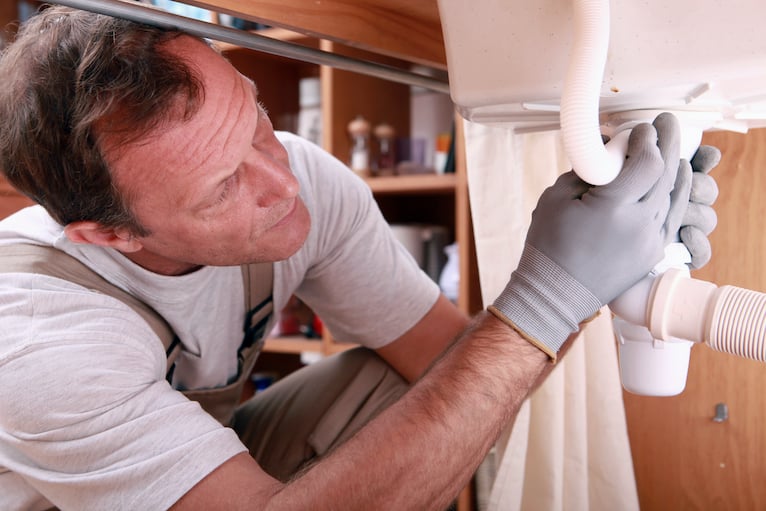
If all else fails, or you just don’t fancy dealing with the mess and smell that come with unblocking a sink or basin, then call in the experts for a quick and hassle-free fix.
Find a trusted plumber by posting your job on Rated People.
For more helpful ideas and tips, take a look at our beginner’s guide to sink unblocking.
Tips for preventing your sink from getting blocked
- Don’t pour grease or oil down the sink.
- Clean plugholes regularly to avoid build-up occurring.
- Don’t flush baby wipes.
- Use a sink strainer to stop debris from getting washed into the drain.
2. Blocked toilet
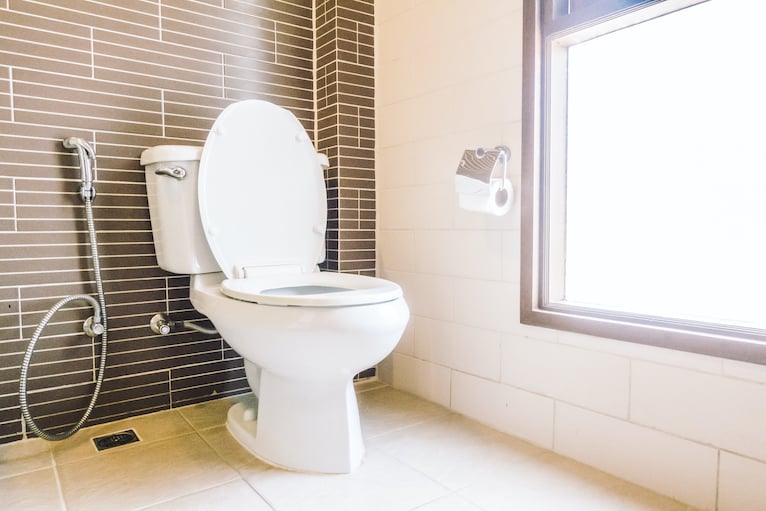
There’s no denying that a blocked toilet is one of the most unpleasant household problems to deal with. A blockage of any shape or size can cause unpleasant odours and inconvenience for everyone in your home. Plus, a partial blockage will quickly turn into a complete blockage if not dealt with swiftly.
What causes a blocked toilet?
Did you know that wet wipes make up 93% of the matter that block UK sewers, according to The Guardian? Most toilet blockages are caused by people flushing things that they shouldn’t, including cotton wool pads, kitchen roll and sanitary items.
How to unblock a toilet – DIY fixes
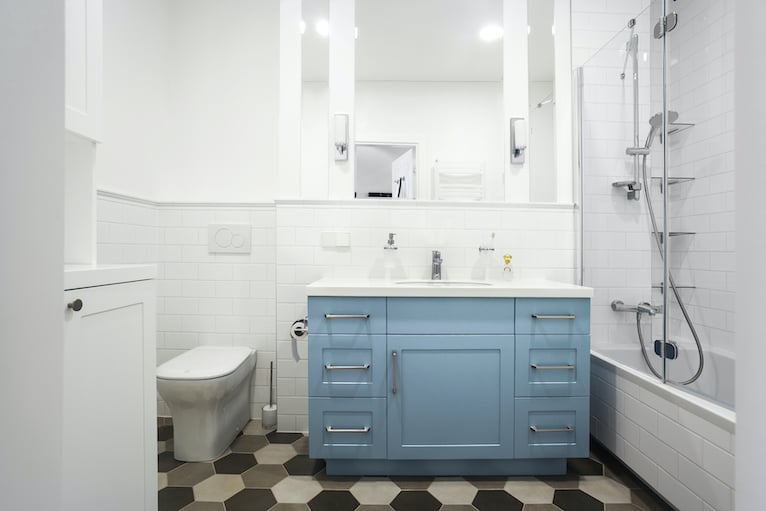
Depending how severe your blockage is (and how brave you’re feeling!), you may be able to get rid of the blockage yourself using one of the methods listed below. Before you get started, don’t forget to put on a pair of rubber gloves and put something down to protect the floor around the toilet, in case anything spills.
1. Plunger
Whilst it may be possible to unblock your toilet using a regular plunger, you are more likely to have success using a special toilet plunger. This is because they’re designed to give you a tighter seal, and so have better suction power when plunging.
2. Plumbing snake
Plumbing snakes can be bought from most DIY stores. You should find instruction for use on the packaging, but the idea is that you feed the snake down the toilet until it pierces through the blockage, and when you wind it back up it may bring the blockage up with it as well.
Who can fix a blocked toilet?
If neither of these DIY methods work, then the blockage may be too far down for you to deal with yourself. In this case, it’s best to call in a plumber.
Find an expert plumber by posting your job on Rated People.
Tips for stopping your toilet from getting blocked
To avoid blocking your toilet it’s best to abide by the commonly quoted rule of only flushing the three P’s: that’s pee, poo and (toilet) paper!
3. Constantly running toilet
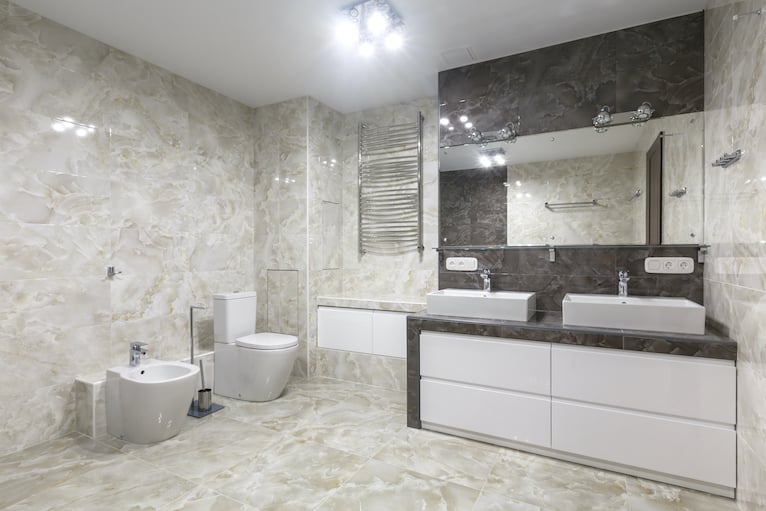
A constantly running toilet is not only annoying to listen to, it can also be an expensive problem, too. For every minute that it’s not fixed, it’s running up your water bill!
What causes a toilet to keep running?
If there’s an irritating trickling sound coming from your toilet, then it’s likely that an internal leak is causing the problem. The leak could be caused by a fault or damage to one of several different internal parts.
How to fix a running toilet – DIY fixes
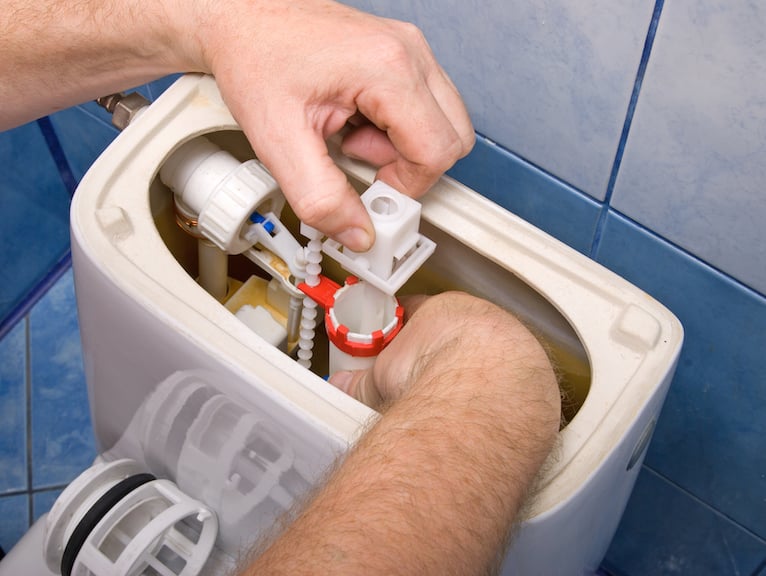
To fix a running toilet, you need to first locate the source of the leak by removing the lid from the cistern. Here are a few parts that you should examine first:
- Water valve – the water valve should be fully on and the water in the cistern should be above the water line. If your water valve has moved out of place, then it may just need adjusting so that it’s fully on again.
- Flapper – The flapper should be fully closed. If the flapper is stuck open, then you can simply close it again so that it completely covers the valve.
- The float – If water in the cistern is rising too high, then it could be causing an overflow. Try lowering the float in the cistern to lower the water level and see if this stops the running water.
Who can fix a running toilet?
If none of these quick fixes solve the problem, then one of your toilet’s parts may be damaged and need replacing. Call in a plumber to quickly diagnose and fix the problem.
Find a local plumber by posting your job on Rated People.
4. Burst pipes and water leaks
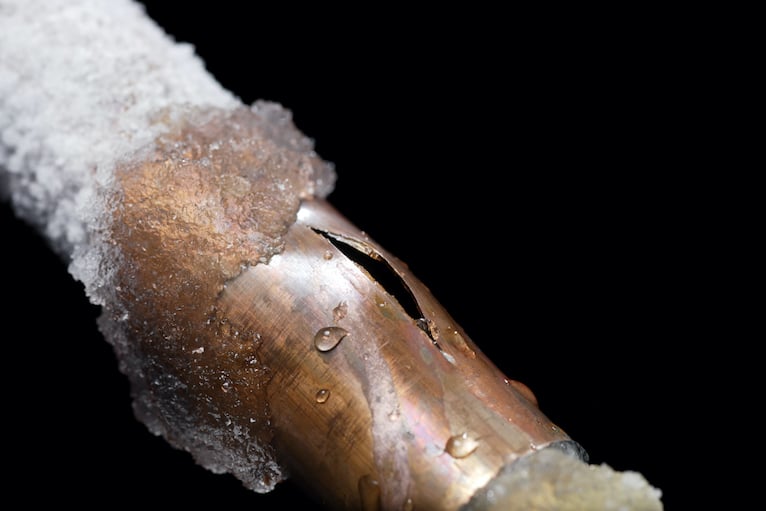
Burst or leaking pipes are a plumbing emergency, as they can cause significant damage to your property, furniture and belongings. If you discover a leaky pipe, the first thing you should do to prevent the problem getting worse is to shut off your home’s water supply at the main water valve. Then, pop a bucket underneath the leak to collect the water and turn on your taps to drain the system.
What causes an outdoor leak?
Not all leaks will happen inside the house. You may experience problems with your water supply if a pipe in the ground outside your home springs a leak too. Signs that you may have a leaking underground pipe include:
- Dirt or air bubbles in your water.
- Cracks in the pavement outside your home.
- Sinkholes.
- Reduced water pressure.
Why do I have a burst pipe?
There are many different problems that can cause pipes to burst or leak, such as:
- Frozen pipes.
- Blockages.
- Old or damaged pipes.
- High water pressure.
- Damage to hot water tank.
- Faulty home appliances.
How to fix a burst pipe
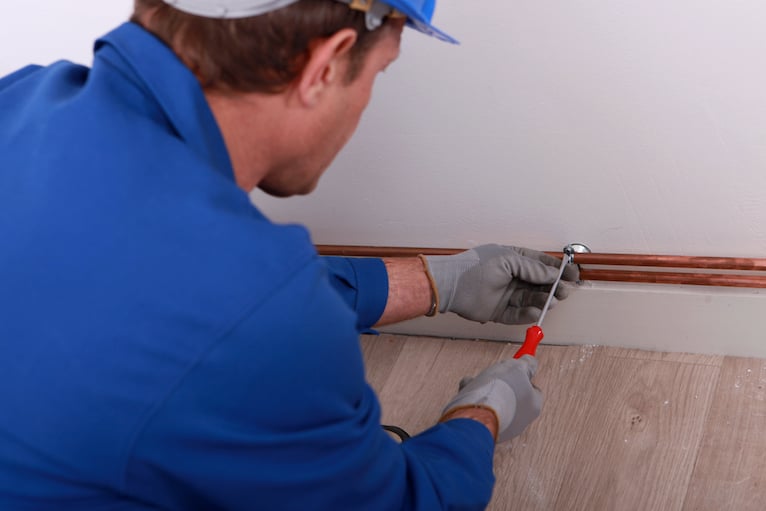
As well as replacing any damaged pipes and parts of your plumbing, a plumber will need to identify what has caused the problem to prevent it from happening again.
Tips for preventing your pipes from bursting
- Insulate water tanks and pipes to protect them from cold weather. Read more tips on how to protect your pipes on our Homeowner Advice Centre.
- Fix any dripping pipes immediately, with the help of a plumber.
- If you think there’s a blockage in your pipes – get it cleared immediately.
- Service your boiler and plumbed home appliances regularly. A gas/heating engineer can complete your annual service.
5. No running water or low water pressure
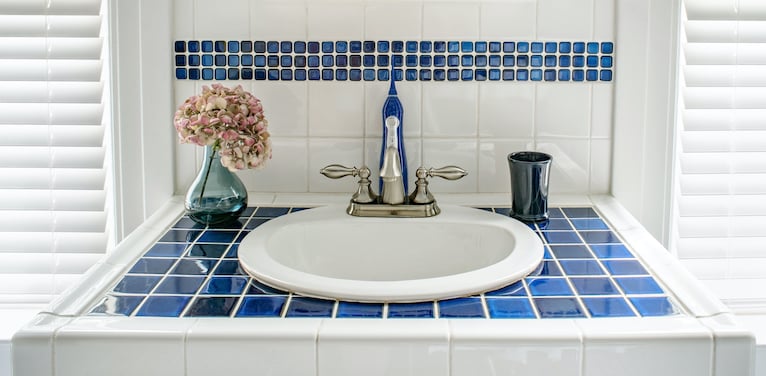
Waking up to find that you have no running water or very low water pressure isn’t the best start to the day. Before making any calls to a plumber, you should check the taps in different rooms to find out whether your home’s whole water supply is affected or not.
Why is my water not running?
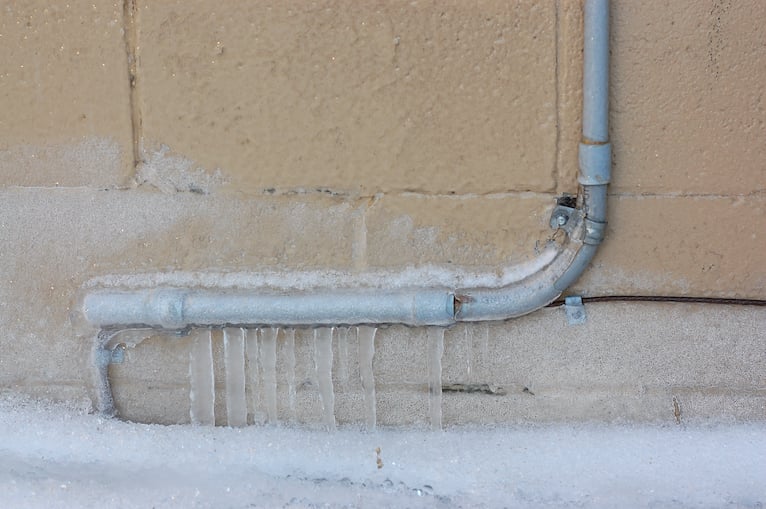
The three most common causes of water not running in your home are:
- The stop valve is switched off. The first thing to check is whether your property’s stop valve is on or off. If the stop valve has accidentally been knocked, then you may have unwittingly switched off your own water supply.
- There’s a problem with water in your area. If your stop valve is open and your water should be switched on, then there could be a problem with water in your area. Give your water company a call or check their website to see if they are currently reporting any problems in your area. If the problem lies with your water provider, then it’s out of your hands and all you can do is wait for the issue to be rectified.
- Your pipes have frozen. Weather suddenly turned cold? If your pipes aren’t properly insulated, then the water may have frozen inside them. If you suspect frozen pipes, turn your water supply off at the stop tap immediately to prevent them from bursting, before attempting to thaw them out using the method below.
How to fix frozen pipes
If there are no problems with the water supply in your area and you suspect that your pipes may be frozen, then you can try to defrost your pipes (only do this once you’ve turned your stop tap off). It’s important not to apply any direct heat to the pipes or try to defrost them too quickly. Reach for your hairdryer, switch it to a low setting and direct it at your frozen pipes to safely thaw them out.
6. Fluctuating shower temperature
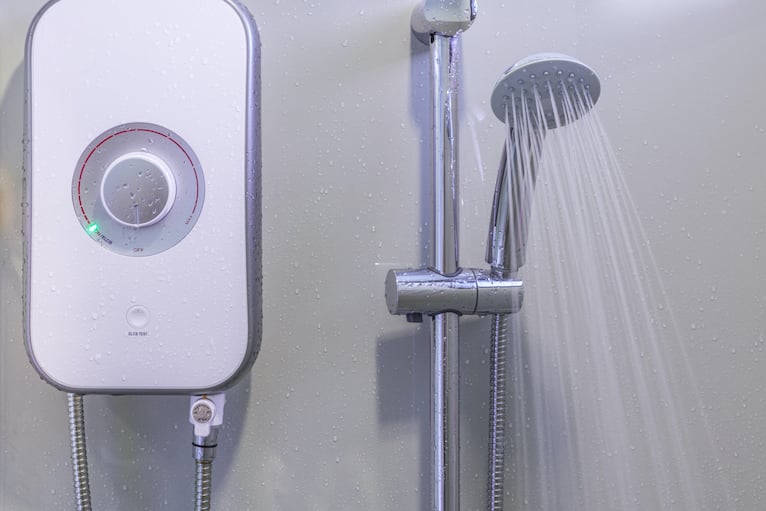
Standing in a shower that’s constantly switching from scalding hot to freezing cold is both uncomfortable and irritating. If your shower fluctuates in temperature, then you may also notice it frequently switching from high pressure to low pressure, too.
Why does my shower keep switching from hot to cold?
When your shower’s valve isn’t balancing water pressure effectively, it can cause your shower temperature to fluctuate. Simply replacing the valve with a pressure balancing valve could solve the problem. If the valve’s not at fault, then it could be a problem with your thermostat or the size of your water heater.
How to fix a shower that keeps switching temperatures
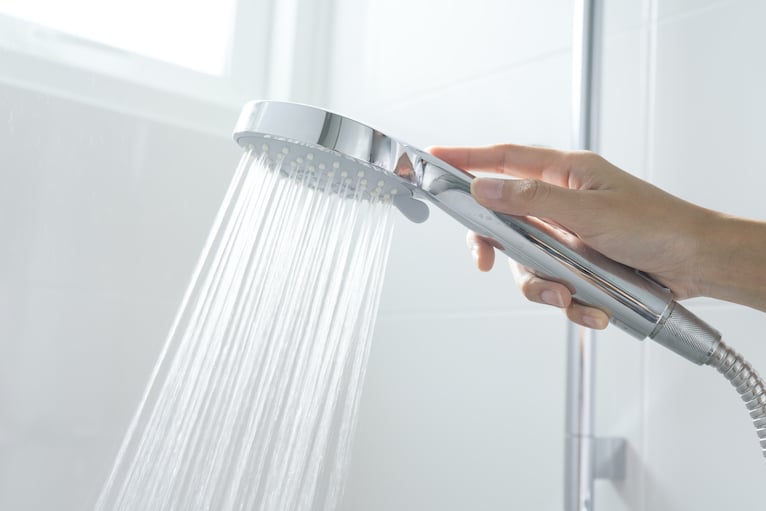
A qualified plumber will be able to identify what’s causing the problem, advise you on any fixes and fit any new parts that are required to get your shower running properly again.
If you’re having problems with your plumbing and can’t fix it yourself with the tips in this blog post, then it’s time to call in a plumber to get things back up and running as quickly as possible.
